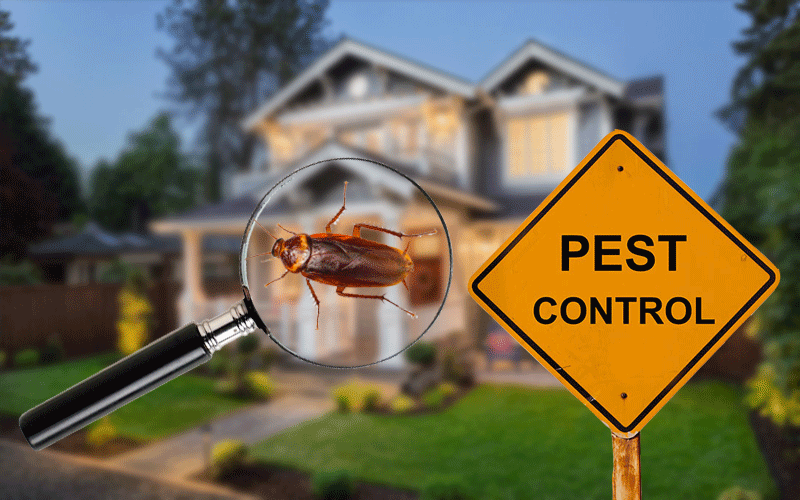A1 Charlotte Pest Control Companies - Your Neighborhood Pest Specialists
A1 Charlotte Pest Control Companies - Your Neighborhood Pest Specialists
Blog Article
Bed Pest Treatment Break Down: Contrasting Chemical Vs. Non-Chemical Solutions
In the world of parasite control, especially when dealing with the relentless problem of bed pests, the choice in between chemical and non-chemical therapy options can be a crucial one. Both techniques supply distinct benefits and disadvantages, influencing aspects such as performance, safety considerations, and general price. By examining the nuanced details of each method, a clearer understanding of which path to go after in resolving a bed bug invasion can be acquired.
Effectiveness of Chemical Treatments
Chemical therapies for bed insect problems have actually been widely identified for their quick and potent efficacy in eradicating these pests. When thinking about the efficiency of chemical therapies, it is crucial to comprehend that they can supply a complete and fast solution to a bed bug issue. Specialist pest control men frequently depend on insecticides to target bed bugs at various phases of their life process, consisting of nymphs, grownups, and eggs. These chemicals usually function by interfering with the bed pests' worried system, resulting in paralysis and ultimate death.
Additionally, chemical treatments have the advantage of providing recurring results, suggesting that they can proceed to get rid of bed insects also after the preliminary application. This recurring activity is particularly valuable in combating any kind of potential re-infestations. Additionally, the rapid action of chemical treatments can bring relief to individuals facing severe bed bug infestations, allowing them to regain control of their space rapidly.
Safety And Security Interest In Chemical Solutions
When utilizing chemical services for bed insect treatment is making sure the safety of residents and the setting,One essential facet that calls for careful factor to consider. While chemical therapies can be efficient in removing bed bugs, they may pose risks if not handled properly. One of the primary safety interest in chemical remedies is the possible damage they can trigger to human health. Direct exposure to particular chemicals made use of in bed pest treatments can bring about respiratory issues, skin inflammation, or various other negative responses, especially in people with pre-existing conditions or sensitivities. Additionally, inappropriate application or dose of chemical pesticides can lead to hazardous residues remaining in the treated area, presenting long-lasting health and wellness threats to residents.
Moreover, the environmental effect of chemical solutions is another considerable factor to consider. Some chemicals made use of in bed bug treatments might be dangerous to beneficial insects, wildlife, and communities if they seep right into the soil or water systems. It is crucial to utilize chemical therapies judiciously, following security standards, and considering much less poisonous alternatives to reduce these threats and ensure the effective and risk-free monitoring of bed bug problems.
Benefits of Non-Chemical Techniques
Thinking about the prospective safety problems and environmental impact linked with chemical options for bed bug therapy, checking out non-chemical approaches presents an encouraging option with several distinct advantages. Non-chemical treatments are environmentally pleasant, as they do not contribute to air or water contamination, making them a sustainable selection for insect control.
Furthermore, non-chemical remedies can be efficient in targeting bed pests, including hard-to-reach locations where chemical therapies might not penetrate - A1 charlotte pest control companies. Techniques such as warmth therapy, vacuuming, steam cleaning, and cushion encasements provide complete removal without the use of dangerous i was reading this chemicals.
Limitations of Non-Chemical Treatments

In addition, non-chemical therapies typically call for several applications to achieve successful elimination. This can be lengthy and might not constantly guarantee total elimination of all bed insects and their eggs, particularly in hard-to-reach or surprise places.
Furthermore, the success of non-chemical treatments greatly depends on correct execution and thoroughness, which can be testing for individuals without specialist competence. Insufficient application of non-chemical approaches may cause insufficient removal, leading to persistent infestations and the requirement for additional treatments.
Therefore, while non-chemical therapies have their benefits, it is important to recognize these restrictions and consider them when determining one of the most reliable technique for handling bed bug problems.
Price Comparison: Chemical Vs. Non-Chemical Options
Provided the restrictions connected with non-chemical therapies, a necessary element to evaluate in the context of bed bug administration is the expense contrast between chemical try this website and non-chemical alternatives. Chemical treatments generally entail the application of pesticides by specialists, which can vary from $250 to $900 per room, depending upon the seriousness of the problem and the dimension of the area to be treated. On the other hand, non-chemical treatments like heat treatment or vapor can be much more pricey, with prices ranging from $1,000 to $6,000 for an entire home. While the first expense of chemical therapies may appear lower, More about the author numerous therapies might be needed to completely eradicate the problem, potentially raising the overall price. On the other hand, non-chemical options might give a more environmentally friendly and sustainable remedy, although they can be cost-prohibitive for some people. Ultimately, when considering the price of bed bug treatment alternatives, it is essential to weigh the in advance costs against the efficiency and long-term sustainability of the chosen method.
Final Thought

Thinking about the prospective security issues and environmental effect connected with chemical solutions for bed pest treatment, exploring non-chemical methods offers a promising option with numerous distinctive advantages.Given the limitations associated with non-chemical treatments, a crucial element to review in the context of bed bug management is the expense comparison in between chemical and non-chemical alternatives. In contrast, non-chemical therapies like heat therapy or heavy steam can be much more pricey, with costs ranging from $1,000 to $6,000 for an entire home. While the first cost of chemical therapies might appear lower, numerous treatments might be needed to fully eradicate the invasion, potentially boosting the general cost.In conclusion, when contrasting chemical and non-chemical bed insect therapy choices, it is crucial to consider effectiveness, safety, benefits, constraints, and price.
Report this page